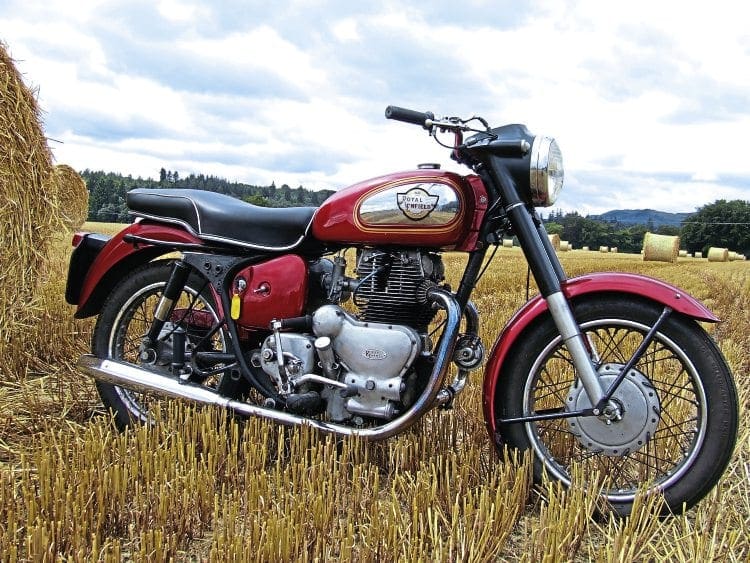Minor by name, but not by nature
ITS NAME INDICATES a smaller powerplant than the 692cc Meteor and Super Meteor, but the ‘Meteor Minor’ designation unjustly plays down the bike’s own star qualities. Often overlooked in favour of larger Royal Enfields, particularly the Constellation and Interceptor, the Meteor Minor is an extremely pleasant machine to own and ride.

The Meteor Minor used the same lightweight welded tubular frame as the 248cc Crusader when it arrived in April 1958 to replace Royal Enfield’s 500 Twin. Initially available in two levels of trim, the ‘Standard’ featured a sprung saddle and six inch front brake. The De Luxe featured a dual seat, seven inch front brake in a full width hub, deeply valanced front mudguard, fully enclosed rear chain and a quick release rear wheel which had previously been an optional extra on the 500 Twin and Bullet. Both Minors sported a siamesed exhaust system. The casquette, deep front mudguard and 17 inch wheel gave the impression of a heavier machine, but the 496cc Meteor Minor was actually lighter and faster than the 495cc 500 Twin. The Motor Cycle’s period road test indicated 97mph – albeit with a following wind. Royal Enfield’s Airflow fairing could also be fitted to boost touring performance.
In 1960, the toolbox design changed, which meant that the coil and tool roll migrated to the nearside while the ignition switch and battery moved to the offside. The air filter is in a chamber in between, accessed by removing the nearside toolbox lid and unscrewing the hex bar inside. The inner panel then comes away with the coil attached, revealing the air filter. The toolbox lid has a handy integrated storage compartment…
Read more in the April issue of CBG – on sale now!




